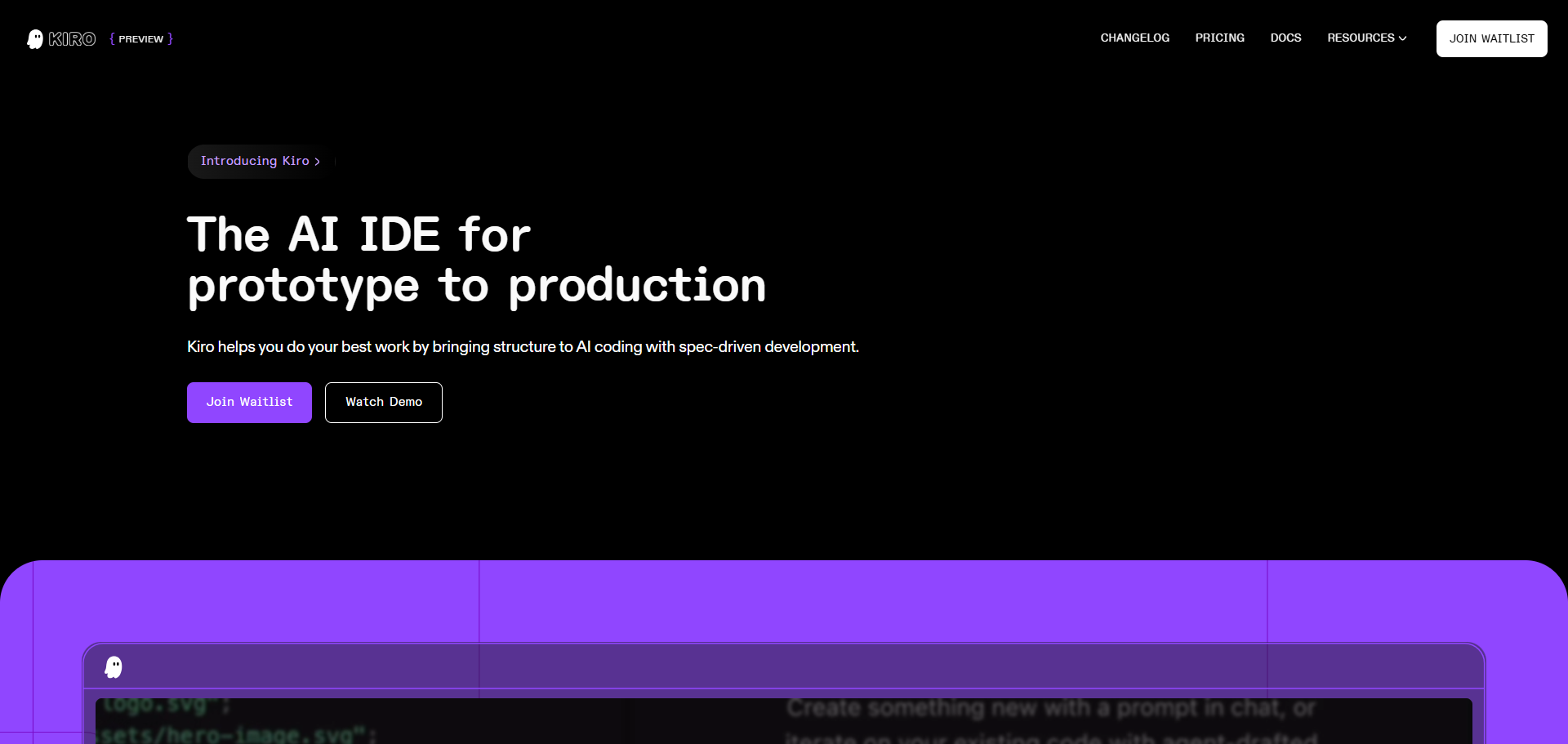Kiro - AI IDE for Spec-Driven Development
Kiro is an AI IDE that brings structure to AI coding through spec-driven development for production-ready software.
- Spec-Driven Development
- Agent Hooks Automation
- Multimodal Interface
- MCP Integration


What is Kiro?
Key Features & Benefits
Spec-Driven Development
Transforms prompts into structured requirements, design documents, and implementation tasks with automatic documentation generation.
Agent Hooks Automation
Background AI agents automatically handle testing, documentation updates, and security checks when files are modified.
Multimodal Interface
Supports natural language prompts, image inputs for UI designs, and architectural diagrams to guide implementation.
MCP Integration
Native Model Context Protocol support connects docs, databases, and APIs for comprehensive project context.
Use Cases
Spec-Driven Development for Complex Applications
Transform vague requirements into structured specs with requirements documents, design docs, and task lists for systematic development workflow.
"Rather than go straight to code, it encourages you to start in this requirements MD file, which defines things like the user story and acceptance conditions."
Rapid Prototyping from Concept to Production
Build complete applications quickly using AI agents that handle frontend, backend, and deployment in an integrated workflow.
"Amazon built Kiro AI from the ground up as part of AWS, so it's deeply integrated with their ecosystem. That means not only can it write code, but it can provision cloud infrastructure, deploy applications, and monitor them automatically."
Large-Scale Code Refactoring and Optimization
Refactor legacy codebases using AI agents that apply modern best practices, architectural patterns, and performance optimizations.
"It basically automatically applies SWE best practices to the vibe-coding workflow to bring about structure and a more organized way of app development."